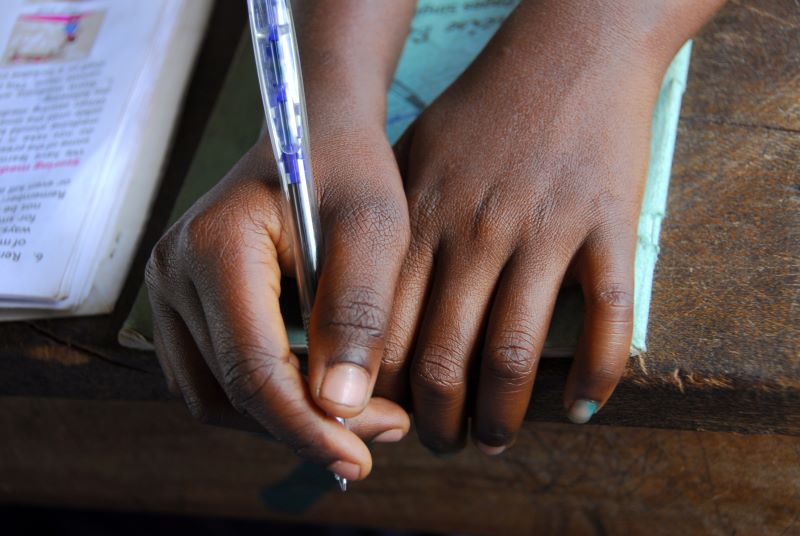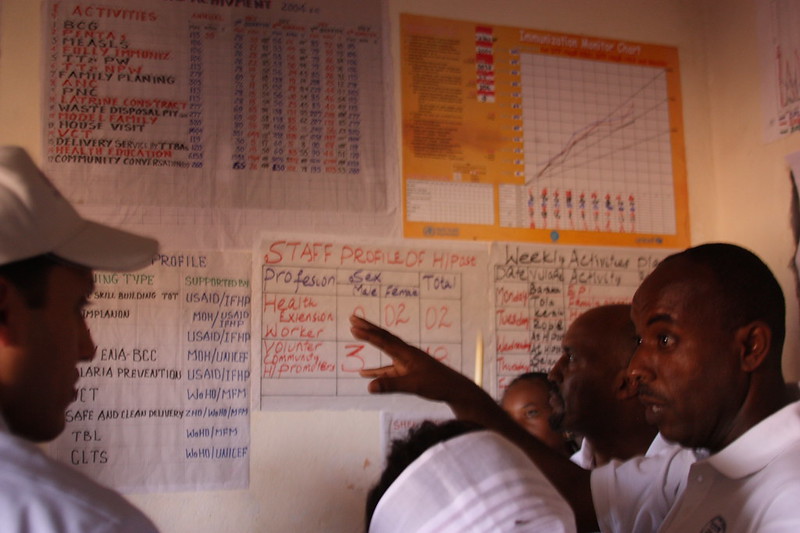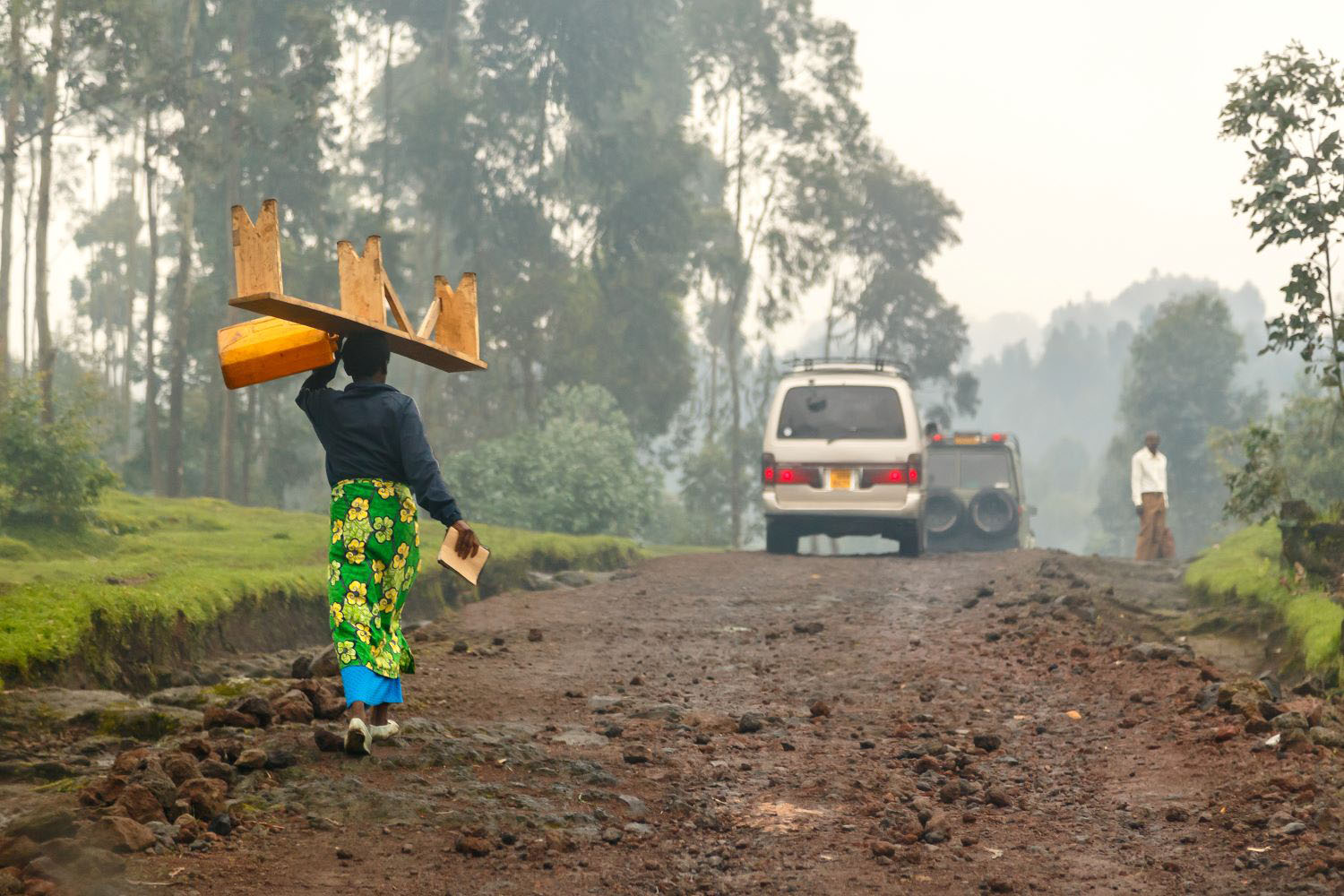Recommended
Despite global and regional commitments to ensure that all children have access to education, refugee children are being left behind. Refugee enrollment in secondary school lags behind host community children in nearly all major host countries, with gaps often more severe for girls.
The UN Refugee Agency, UNHCR, finds that refugee girls remain half as likely to enroll in secondary school as their male peers. In Ethiopia and Kenya, refugee girls are only 40 percent as likely to enroll in secondary school as boys. Barriers to girls’ education in low- and middle-income countries are well-documented, but we know less about the ways in which these barriers vary and may multiply in humanitarian contexts.
In a new study, forthcoming at the Journal on Education in Emergencies, I examine household and community factors shaping secondary school participation for refugee and host community students in Ethiopia, one of the largest refugee-hosting countries in Africa.
Using two large household surveys—the World Bank’s Skills Profiling Survey (which covered more than 27,000 people) and UNICEF’s Building Self-Reliance Program survey (with more than 17,000 people)—I find that while there are some important and distinct concerns for refugee girls, there are also several ways in which they face the same challenges as the girls in the communities around them.
Refugee and host community girls face many common challenges
As a majority of the more than 800 thousand refugees hosted in Ethiopia live in camps located in remote areas of the country, host communities thus also often have limited access to sufficient public services, including schools. I compare refugees to their immediately surrounding host communities to examine the ways in which barriers vary within narrowly defined geographic locations.
Refugee and host community parents within my study had similar educational backgrounds, and findings suggest that first-generation learner status is correlated with lower rates of secondary school participation for both groups. Additionally, in most cases refugee and host community parents expressed similar levels of satisfaction with the quality of schools and teachers available in their areas as well as similar opinions about the value of education for girls. This is consistent with recent research in Ethiopia that finds that being a first-generation learner is negatively correlated with education outcomes for national students.
Globally, adolescent girls face the greatest risk of violence and exploitation of any age group. The risks of gender-based violence (GBV) and early or forced marriage for adolescent girls are heightened in humanitarian settings and can negatively impact education. In Ethiopia, refugee women reported slightly higher rates of GBV than host community women in all regions except for Benishangul-Gumuz and Somali. In Somali, more than 50 percent of women in both groups reported experiencing GBV. Overall, the relatively high prevalence of GBV experienced by both groups suggests that this is a common challenge that should be addressed in both refugee and host communities, perhaps through common interventions.
Table 1. Refugee and host community women face similar rates of gender-based violence
| Prevalence of gender-based violence among refugee and host community women | ||||||
|---|---|---|---|---|---|---|
| Experienced any GBV (%) | Experienced physical GBV (%) | |||||
| (1) | (2) | (3) | (4) | (5) | (6) | |
| Refugee | Host | Difference | Refugee | Host | Difference | |
| Afar | 15* | 13* | +2* | 6* | 1* | +5* |
| Benishangul-Gumuz | 23 | 24 | -1 | 15 | 16 | -1 |
| Gambella | 36* | 28* | +8* | 26* | 19* | +7* |
| Somali | 57 | 54 | +3 | 32* | 29* | +3* |
| Tigray | 51* | 45* | +6* | 45* | 36* | +9* |
| N | 7,492 | 7,259 | 7,645 | 7,463 | ||
Refugee girls face added disadvantages related to domestic responsibilities and safety
Refugee girls’ secondary school participation is disproportionately limited by domestic responsibilities and concerns about community safety. Refugee girls who are responsible for collecting water were about 10 percentage points less likely to be enrolled in school. And the longer it took them to collect water, the less likely they were to be enrolled in school. Each additional five minutes needed to reach a water source was associated with a 2 percentage point decrease in the likelihood of being enrolled in school.
In Ethiopia, like other host countries in the region, including Kenya, secondary schools are located within host communities, thus requiring refugee learners to travel outside of camps—and sometimes very long distances—to attend secondary school. This can result in much longer travel times and greater exposure to host communities than is necessary to attend the primary schools located within camps. Refugee girls in households which reported feeling safe walking in the community were 6 to 10 percentage points more likely to be enrolled in secondary school. Though perceived safety and travel times to secondary schools matter for all students, and particularly for girls, they have the potential to disproportionately impact refugee girls specifically.
Policy responses may need to vary within host countries based on local conditions and refugee-host dynamics
In large, diverse host countries–with large, diverse refugee populations–like Ethiopia (but also Kenya, Uganda, Sudan, and others), supporting refugees may require different solutions across locations based on refugee-host dynamics. For example, host community attitudes toward refugees were most negative in Benishangul-Gumuz (Table 2, columns 1 and 2). Refugees in Benishangul-Gumuz are less likely to share an ethnic background or language with the surrounding host community compared to those in other regions, which may contribute to negative feelings toward refugees as a more distinct outgroup. Conversely, we see more positive perceptions of refugees among host respondents in Somali, where refugees are likely to share a common ethnic identity and language with hosts.
Table 2. Refugee and host community relationships vary across locations and ethnic groups
| Refugee and host community relationships (% agree) | |||||
|---|---|---|---|---|---|
| (1) | (2) | (3) | (4) | ||
| Hosts want refugees to leave | Refugees should be able to share education services with hosts | Refugees have made it more difficult to access health or education | Refugees perceive good relationships with hosts | ||
| Afar | 11 | 62 | 27 | 87 | |
| Benishangul-Gumuz | 65 | 40 | 39 | 80 | |
| Gambella | .. | 74 | .. | 61 | |
| Somali | 17 | 74 | 10 | 93 | |
| Tigray | 19 | 79 | 43 | 87 | |
From refugees’ perspectives, relationships with host communities were worst in Gambella and best in Somali (column 4). Gambella also has the largest gaps in secondary school participation between refugees and host communities with a difference of about 49 percentage points between the two, as well as the largest host community gender gaps with a 20-percentage point difference between host community boys and girls. Gambella also has more frequent instances of violence in the areas surrounding refugee camps, including violence targeting schools, which may contribute to both negative perceptions of relationships with hosts and could limit participation in school for both refugee and host community girls due to common concerns about safety.
Takeaways
- Refugee girls are disproportionately disadvantaged in access to secondary school compared to boys and host community girls, even when I compare refugee camps to their immediately surrounding host communities.
- Differences in secondary school enrollment between refugee and host community girls are unlikely to be driven by variation in parental attitudes toward the value of girls’ education, perceptions of the quality of schooling available, or differences in parental education. On average, first-generation learners are less likely to enroll in secondary school, whether they’re refugees or not. Interventions identifying and supporting first-generation learners could jointly target refugee and host communities.
- Exposure to gender-based violence is common among both refugee and host community women, and it may negatively impact school participation for adolescent girls broadly. Interventions targeting GBV could productively target refugee and host communities jointly.
- Community safety and the quality of relationships between refugees and their host communities vary across locations, and safety is a particular concern for refugee girls’ secondary school enrollment. Girls are more likely to be in school in places where households report feeling safe walking in the community during the day. Supporting refugee girls in accessing secondary schools outside of camps will require ensuring that routes to school and conditions in areas surrounding are safe for girls, and may require additional or different interventions across locations based on local refugee-host dynamics and distances to schools. When conditions vary, pursuing national policies that fail to account for local variation may put refugee girls at risk.
As many low- and middle-income host countries move toward more inclusive models of refugee education, it’s critical to identify barriers that may differentially limit refugee girls’ inclusion and thus warrant unique or targeted policy solutions, as well as those which could be addressed jointly to benefit both refugees and hosts.
Note: This research was conducted and reflects findings prior to the recent increase in conflict in Ethiopia. The broad lessons are still relevant in Ethiopia and in many other low- and middle-income host countries. However location-specific statistics may vary based on heightened conflict, violence, and uncertainty, particularly in the Tigray region in which recent attacks have tragically targeted refugee camps.
Thanks to Dave Evans for helpful comments and suggestions.
Disclaimer
CGD blog posts reflect the views of the authors, drawing on prior research and experience in their areas of expertise. CGD is a nonpartisan, independent organization and does not take institutional positions.






